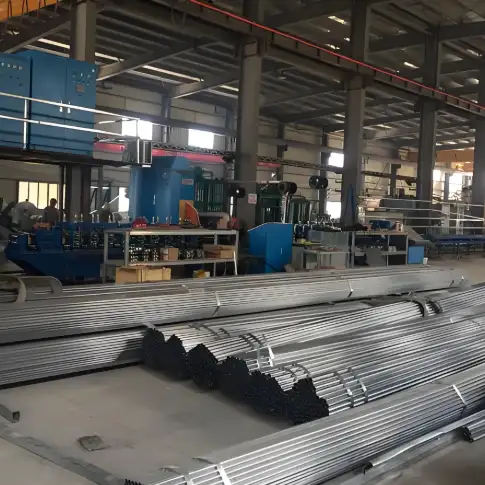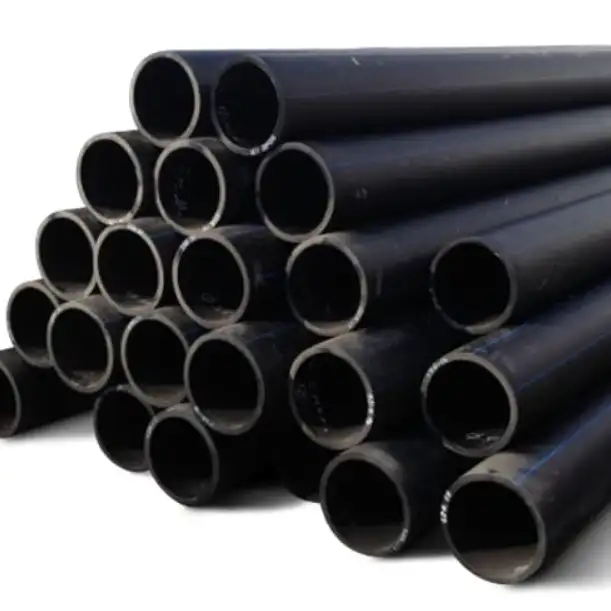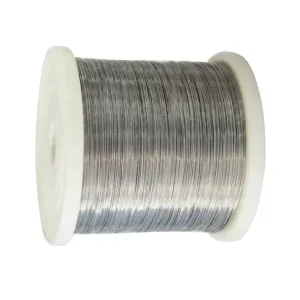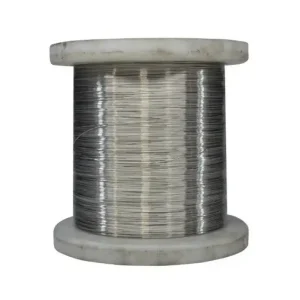At MWaolloys, we manufacture Carbon Steel Seamless Pipes with precision, integrity, and compliance with international technical standards. Our seamless pipe solutions are trusted globally across infrastructure, energy, petrochemical, mechanical, and hydraulic systems. But why do engineers and procurement managers consistently choose carbon steel seamless pipes over other pipe types? It’s simple—uniformity, strength, and reliability under pressure.
What is Carbon Steel Seamless Pipe?
Carbon steel seamless pipes are cylindrical hollow sections made from solid round billets that are heated and then pierced to form a pipe. Unlike welded pipes, seamless pipes do not have any seams or weld joints, giving them better mechanical strength, high-pressure resistance, and fatigue performance.
Their primary composition includes iron and carbon, and they may be alloyed with trace elements like manganese or silicon to improve specific properties. Seamless pipes are widely used in high-temperature, high-pressure, and corrosive environments due to their integrity and leak-proof nature.
⭐Standard Overview & Key Properties
(Global Standards Comparison)
| Parameter | ASTM A106 Gr. B | JIS G 3456 STPT410 | DIN 2462 St 52 | Key Notes |
|---|---|---|---|---|
| Scope | High-temperature service (≤540°C) | Steam/boiler systems (≥350°C) | General structural/hydraulic | Max temp varies by grade |
| Manufacturing | Hot-finished seamless (S) | Seamless (S) or ERW* | Seamless (S) or welded | *STPT480 requires seamless only |
| Ends | Plain/beveled (30–35° bevel) | Plain/beveled (30–35°) | Plain/threaded | Bevel width ≤2.4mm for WT≤22mm |
| Key Applications | Power plants, refineries | Boilers, superheaters | Machinery, construction | Avoid ERW for >480°C service |
🔬Chemical Composition Comparison
(Weight %, Max Unless Noted)
| Element | ASTM A106 Gr. B | JIS STPT410 | DIN St 52 | Permissible Variation |
|---|---|---|---|---|
| C (Carbon) | ≤0.30 | ≤0.30 | ≤0.22 | ±0.01% |
| Mn (Manganese) | 0.29–1.06 | 0.30–1.00 | 1.00–1.60 | ±0.05% |
| P (Phosphorus) | ≤0.025 | ≤0.035 | ≤0.040 | ±0.005% |
| S (Sulfur) | ≤0.025 | ≤0.035 | ≤0.040 | ±0.005% |
| Si (Silicon) | ≥0.10 | 0.10–0.35 | ≤0.55 | ±0.03% |
💡 Critical Insight: ASTM A106’s lower P/S vs. JIS STPT enables -29°C low-temp use without impact testing.
💪Mechanical Properties Comparison
(Room Temperature, Seamless Pipes)
| Property | ASTM A106 Gr. B | JIS STPT410 | DIN St 52 | Test Standard |
|---|---|---|---|---|
| Tensile Strength (min) | 415 MPa (60 ksi) | 410 MPa | 510–680 MPa | ASTM E8/JIS Z 2241 |
| Yield Strength (min) | 240 MPa (35 ksi) | 230 MPa | 355 MPa | ASTM E8/JIS Z 2241 |
| Elongation (min) | 12% | 20% | 18% | - |
| Hardness (max) | 163 HBW | 187 HBW | 210 HBW | ASTM E10 |
📏Dimensional Tolerances & Common Shapes
(Per ASTM A530, JIS G 3456)
Tolerance Ranges
| Parameter | Tolerance | Critical Notes |
|---|---|---|
| Outer Diameter | ±1% (for OD ≤4") | ±0.79mm for 2" pipes |
| Wall Thickness | +12.5%/-10% | Negative tolerance capped at -8% for critical apps |
| Length | ±10 mm (≤6m) | Custom lengths up to 14m |
| Straightness | ≤0.2% of total length | Mandatory for structural use |
Common Shapes & Sizes
| Shape | Size Range | Typical Applications |
|---|---|---|
| Round Pipe | OD: 10.3–1219 mm (0.4–48") | Pipelines, boilers |
| Square Tube | 20×20–200×200 mm | Structural frames |
| Rectangular Tube | 30×15–400×200 mm | Machinery, conveyors |
⚖️Common Sizes & Theoretical Weight Tables
*(Round Pipes, Schedule 40/80)*
Standard Dimensions & Weights (ASTM A106 Gr. B)
| Nominal Size (NPS) | OD (mm) | Schedule | WT (mm) | Weight (kg/m) |
|---|---|---|---|---|
| 1/2" | 21.3 | 40 | 2.77 | 1.27 |
| 2" | 60.3 | 40 | 3.91 | 5.44 |
| 4" | 114.3 | 40 | 6.02 | 16.07 |
| 6" | 168.3 | 80 | 10.97 | 41.67 |
| 12" | 323.8 | 80 | 12.70 | 97.50 |
Weight Calculation Formulas
-
Round Pipe:
Weight (kg/m) = (OD - WT) × WT × 0.02466 -
Square Tube:
Weight (kg/m) = [2×(Width+Height) - 4×WT] × WT × 0.00785 -
Rectangular Tube:
Weight (kg/m) = [2×(Width+Height) - 4×WT] × WT × 0.00785
Example: 200mm OD × 10mm WT round pipe:
(200 - 10) × 10 × 0.02466 ≈ 46.85 kg/m.
⚙️Grade-Specific Applications & Processing
| Grade | Typical Uses | Welding | Corrosion Protection |
|---|---|---|---|
| ASTM A106 Gr.B | Power plant steam lines, refineries | Preheat >50°C for WT>25mm | Epoxy coating or galvanizing |
| JIS STPT370 | Low-pressure boilers, hot water systems | SMAW with E7018 electrodes | Black paint |
| DIN St 52 | Hydraulic cylinders, structural columns | GMAW with low-H electrodes | Hot-dip galvanizing (ISO 1461) |
⚠️Procurement & Quality Alerts
-
Certification: Mill Test Reports (MTRs) must include:
-
Heat analysis (C, Mn, P, S)
-
Hydrostatic test data (≥5MPa for 5s)
-
-
Dimensional Fraud: For OD >200mm, specify laser-scanned verification.
-
Counterfeit Risk: Chinese GB 20# often mislabeled as ASTM A106B – verify Mn content (≥0.29%).
-
Surface Defects: Grinding depth ≤0.1mm allowed; deeper defects require WT compensation.

Key Grades and Specifications (ASTM, ASME, EN Standards)
| Standard | Grade | Outer Diameter (mm) | Wall Thickness (mm) | Application |
|---|---|---|---|---|
| ASTM A106 | Grade B | 21.3 – 660 | 2.5 – 70 | Oil & Gas, Boilers, Power |
| ASTM A53 | Grade A & B | 10.3 – 610 | 2.5 – 60 | Water, Air, Steam |
| ASME SA179 | SA179 | 12.7 – 76.2 | 1.2 – 10 | Heat Exchangers, Condensers |
| EN 10210 | S355J2H | 21.3 – 711 | 2 – 60 | Structural, Construction |
| API 5L | Gr B / X42-X80 | 60 – 660 | 3 – 65 | Pipeline Systems (Gas & Oil) |
Each specification targets different industries with specific mechanical and chemical requirements. For instance, ASTM A106 Grade B offers excellent tensile strength and is preferred in pressure-bearing environments.
Why Choose Seamless Over Welded Pipes?
Let’s look at a direct technical comparison:
| Feature | Seamless Pipe | Welded Pipe (ERW/LSAW) |
|---|---|---|
| Weld Seam | None | Yes (longitudinal or spiral) |
| Pressure Tolerance | High | Moderate |
| Dimensional Tolerance | Tight | Moderate |
| Cost | Higher | Lower |
| Failure Points | Lower (no welds) | Higher (weld line is a weak point) |
| Corrosion Resistance | Uniform | May corrode at weld |
International Market Prices (2025 Updated)
| Region | Price (USD/ton, ASTM A106B) | Remarks |
|---|---|---|
| China | $680 – $790 | Competitive FOB Shanghai |
| United States | $1050 – $1250 | Strong domestic demand |
| Europe | $980 – $1150 | Limited imports, tight supply |
| India | $720 – $850 | Competitive pricing, variable lead time |
| Middle East | $850 – $1000 | Strong oil sector demand |
All pricing is FOB as of Q2 2025, excluding VAT and transport. Data collected via MetalMiner Index [2025 Q2].
Testing and Certification at MWaolloys
We don’t just produce pipes—we verify them. Our quality assurance covers:
-
Hydrostatic Testing
-
Ultrasonic and Eddy Current Inspection
-
Flattening, Flaring, and Bend Tests
-
Spectrometric Chemical Analysis
-
Third-party Witness Inspection (SGS, BV)
Each batch is accompanied by EN 10204 3.1 Mill Test Certificates (MTC) for traceability and compliance.
Why Partner with MWaolloys?
-
ISO 9001:2015 Certified
-
Over 15 years of export experience
-
Factory audits accepted
-
Custom production capability
-
On-time delivery rate: 98.5% (2024 data)
We are not just a vendor—we are your metallurgical partner. Our engineering support team helps you select the right material grade, optimize cost, and reduce project risks.
Frequently Asked Questions (FAQs)
1: What distinguishes seamless carbon steel pipe from welded alternatives?
Answer:
Seamless pipes are formed by piercing a solid billet, so they have no longitudinal weld seam. This uniform grain flow gives higher burst strength and better pressure resistance compared to ERW or LSAW steel tubes.
2: Which ASTM standards govern MWaolloys seamless carbon steel tubing?
Answer:
We manufacture to ASTM A106 (Grades A/B), ASTM A53 (Grades A/B), and ASME SA179 standards. Each specification defines chemical composition, tensile strength, and permissible wall thickness for high‑temperature and high‑pressure service.
3: How do I choose the right wall thickness for high‑pressure service?
Answer:
Select the schedule number (e.g., SCH40, SCH80) based on your system’s maximum operating pressure and temperature. Thicker walls increase pressure rating, while thinner walls save weight and material cost.
4: Can MWaolloys provide third‑party inspection for seamless carbon tubing?
Answer:
Yes. We arrange witnessing by SGS, Bureau Veritas, or Lloyd’s Register at our mill, covering hydrostatic testing, ultrasonic inspection, and MTC issuance under EN 10204 3.1.
5: What is the typical delivery time for ASTM A106 Grade B seamless pipe?
Answer:
Standard lengths (5.8 m or 6 m) ship within 15–25 days after deposit. Custom cuts or NACE‑compliant grades may require 5–7 extra days, depending on batch scheduling.
6: How does hydrostatic testing ensure pipe integrity?
Answer:
Hydrostatic testing pressurizes each pipe above its rated pressure (typically 1.5× working pressure) to detect leaks or wall defects. Pipes that hold pressure without drop are certified for service.
7: Are NACE MR0175/ISO 15156 grades available for sour‑service applications?
Answer:
Absolutely. Our sour‑service seamless tube options meet NACE MR0175 requirements for H₂S environments, preventing sulfide stress cracking in oil and gas wells.
8: What packaging and minimum order quantities apply?
Answer:
MOQ is 5 tons. We bundle pipes in hexagonal steel‑strip packs with waterproof wrapping; wooden crates per ISPM 15 are optional. Labels include grade, schedule, and lot number for traceability.





